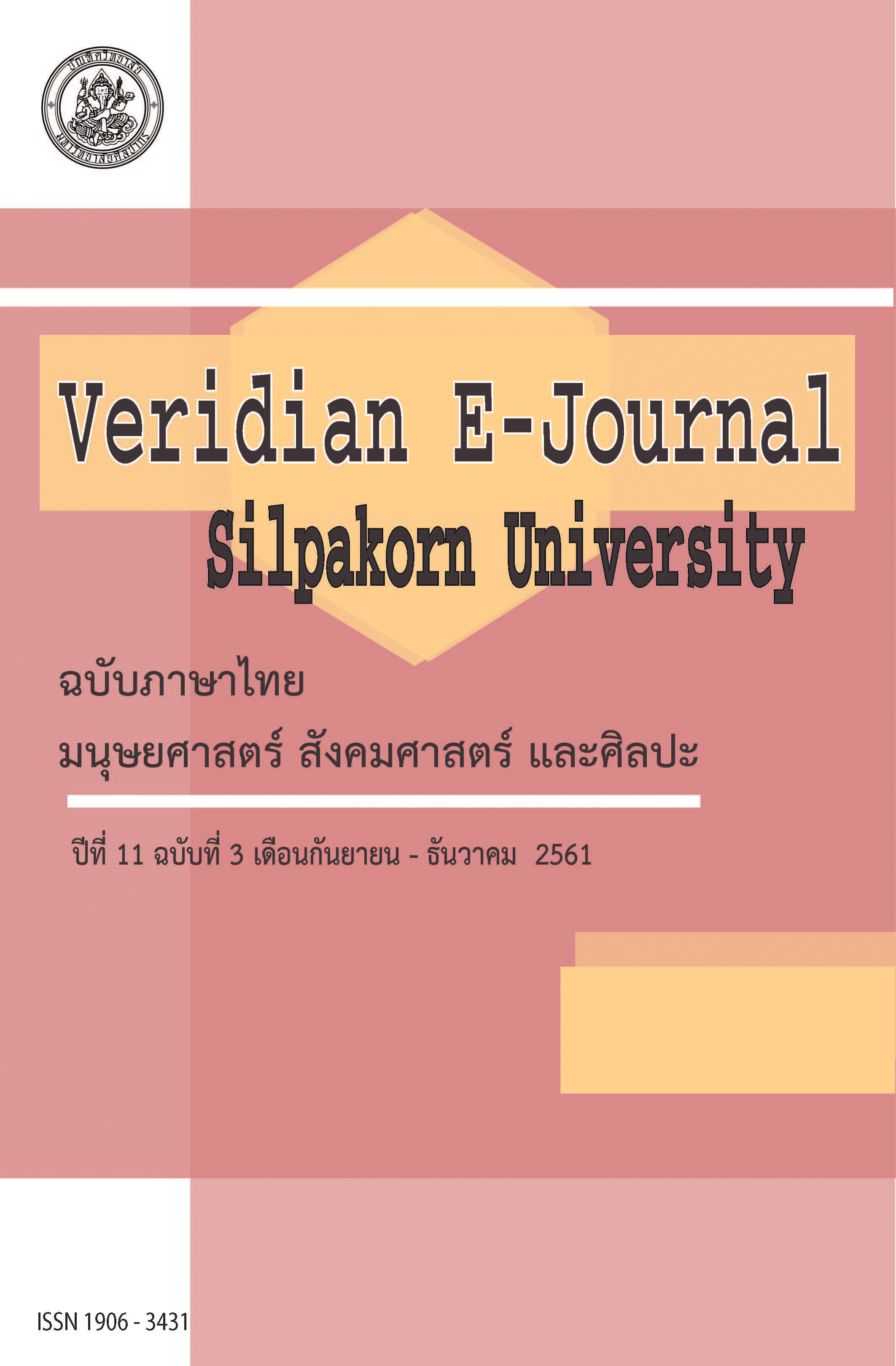สภาพปัจจุบันปัญหาและความต้องการในการจัดการเรียนรู้สะเต็มศึกษาของครูวิทยาศาสตร์ระดับชั้นประถมศึกษา (Current Situation, Problem and Needs for STEM Learning of Primary Science Teacher)
Main Article Content
Abstract
การวิจัยในครั้งนี้มีวัตถุประสงค์เพื่อสำรวจสภาพปัจจุบันปัญหาและความต้องการในการจัดการเรียนรู้ตามแนวสะเต็มศึกษา ของครูผู้สอนวิทยาศาสตร์ระดับชั้นประถมศึกษาเก็บข้อมูลโดยใช้แบบสอบถามจากกลุ่มตัวอย่างซึ่งเป็นครูวิทยาศาสตร์ ระดับชั้นประถมศึกษาสังกัดสำนักงานเขตพื้นที่การศึกษาประถมศึกษาศรีสะเกษ เขต 4 จำนวน 137 คน ที่ได้มาโดยการสุ่มตัวอย่างแบบง่าย (Simple random sampling) สถิติที่ใช้ในการวิเคราะห์ข้อมูลได้แก่ ค่าเฉลี่ย ส่วนเบี่ยงเบนมาตรฐาน และร้อยละ
ผลการสำรวจพบว่า ครูส่วนใหญ่มีความรู้ความเข้าใจเกี่ยวกับสะเต็มศึกษาศึกษาในระดับดีมาก ยกเว้นในประเด็น 1) สะเต็มศึกษาเน้นการเชื่อมโยงเนื้อหากับชีวิตจริง ทั้งในระดับชุมชน สังคม และนานาชาติ 2) สะเต็มศึกษาเน้นให้ผู้เรียนมีทักษะที่จำเป็นในศตวรรษที่ 21 โดยเฉพาะทักษะการคิดขั้นสูง และการสร้างนวัตกรรม และ 3) รูปแบบในการจัดการเรียนรู้ตามแนวทางสะเต็มศึกษา สามารถใช้รูปแบบการจัดการเรียนรู้ได้หลากหลายไม่จำกัดเฉพาะการจัดการเรียนรู้โดยใช้ปัญหาเป็นฐาน ที่มีครูตอบถูกไม่ถึงร้อยละ 80โดยครูที่จบสาขาวิชาวิทยาศาสตร์ ครูสอนประจำวิชาวิทยาศาสตร์ และการมีประสบการณ์ในการอบรมเกี่ยวกับสะเต็มศึกษา มีความรู้ความเข้าใจเกี่ยวกับสะเต็มศึกษาสูงกว่าครูกลุ่มอื่น และครูส่วนใหญ่ประเมินตนเองว่ามีการจัดการเรียนรู้ตามแนวทางสะเต็มศึกษาอยู่ในระดับดี แต่ก็ยังพบปัญหาในการจัดการเรียนรู้ตามแนวทางสะเต็มศึกษา คือ ครูขาดความชัดเจนเกี่ยวกับการจัดการเรียนรู้ตามแนวทางสะเต็มศึกษาในบางประเด็น จึงทำให้ครูไม่สามารถนำเนื้อหา สาระ และมาตรฐานการเรียนรู้ตามหลักสูตรในแต่ละสาระการเรียนรู้มาบูรณาการในการออกแบบการจัดการเรียนรู้ตามแนวทางสะเต็มศึกษาด้วยตนเอง ทำให้การจัดกิจกรรมการเรียนรู้ตามแนวสะเต็มศึกษาในชั้นเรียนและการกำหนดแนวทางในการวัดและประเมินผลตามแนวทางสะเต็มศึกษายังขาดประสิทธิภาพ ครูจึงมีความต้องการในการพัฒนาตนเองเพิ่มเติมในด้าน 1) การสร้างสื่อการเรียนการสอน 2) การเขียนแผนการสอนและออกแบบกิจกรรมการเรียนรู้ และ 3) ด้านการวัดและประเมินผล โดยวิธีการ 1) การฝึกอบรมเชิงปฏิบัติการ 2) ชุดฝึกอบรมพร้อมอุปกรณ์สำหรับฝึกด้วยตนเองเป็นรายบุคคล 3) การอบรมออนไลน์ 4) การพัฒนาอย่างเข้มและได้รับการนิเทศติดตามอย่างต่อเนื่อง และ 5) การศึกษาดูงานโรงเรียนศูนย์สะเต็ม ตามลำดับ
The purposes of this study was to investigatethe current situations, problems and needs for STEM learningof primary science teachers in Si Sa Ket Primary Education Area 4. The data were collected by using questionnaire. The sample were 137 primary science teachers, selected by simple random sampling. The statistics that are used for analyzing were the mean, standard deviation, and percentage.
The survey found that most teachers hadunderstanding about STEM at the excellent level, teachers can answer correctly more than 80% of their questions, except 1) STEM education connecting content with real life both of community, social and international levels; 2) STEM education providing students the 21st century skills, especially higher order thinking skills and innovation skill; and 3) STEM education capable variety of learning method, not only limited to problem-based learning; which teacher answer correctly less than 80%. In addition, the teachers who graduated from science, science teachers and teachers who experiencing STEM education training, they have higher level of understanding about STEM than other teachers. They also perceived themselves having a good level of STEM teaching. However, there are also problems with teachers lacked of clarity about the STEM learning on some issues. Therefore, teachers cannot analyze and integrate contents from different subject areas to design learning activities in the classroom by themselves, and cannot set effective guidelines for evaluation and assessment in STEM education. Thus, most teachers needed more self-development on topic 1) the creation of teaching equipment, 2) the writing and designing of the lesson plan and learning activities and 3) evaluation and assessment. The aspect that they want on professional development methods were 1) training workshop 2) training kit with equipment for personal self-training 3) online Training 4) intensive development and continuous monitoring; and 5) visiting the STEM center schools.
